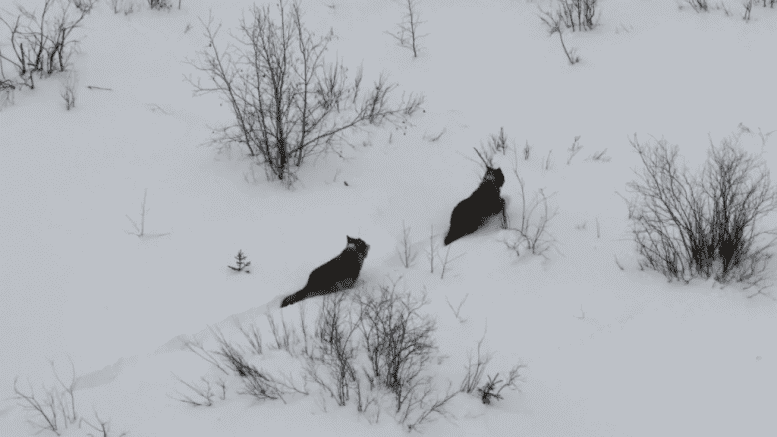The Wek’èezhìı Renewable Resources Board (WRRB) has authorized the Government of the Northwest Territories (GNWT) to proceed with using satellite collars and shooting from aircraft to help reduce the wolf population.
The plan has been developed to help Bathurst and Bluenose-East barren-ground caribou herd populations recover as the wolves continue to prey on caribou causing a steep decline in numbers, according to the GNWT.
The program was jointly proposed by the territorial and the Tłı̨chǫ Government at the end of January. On March 9, after hearing from Environment and Natural Resources, and Tłı̨chǫ Government, the WRRB held an emergency meeting and revised the procedure to be used to review the proposal in place.
As of last Friday, March 13, the WRRB said it would allow the proposed wolf management program to proceed. This means wolf population decline targets have not been met by hunters and the commencement of aerial shooting will begin.
According to a WRRB news release, “The objective is to remove 60‐80 per cent of wolves (observed and/or predicted) on the Bathurst and Bluenose‐East herd ranges.”
Jody Pellissey is the WRRB’s executive director.
“My expectation is that the aerial shooting will happen once there’s fewer to no harvesters on the land,” Pellissey told CKLB. “So that there are no issues with respect to shooting from helicopters.”
In a CBC interview, Shane Thompson, minister of Environment and Natural Resources, said: “We looked at every option available and if we don’t do nothing and just do status quo, we’ll just continue seeing the decline of our populations.”
The government plans to use satellite collars to locate whole packs of wolves to shoot them from a helicopter, however, they will only target uncollared wolves in aeriel shooting in the hopes that the ones with tracking devices will lead them to future packs.
arthur.green@cklbradio.com
Twiteer.com/artcgreen
Arthur C. Green is from Whitbourne Newfoundland and graduated from the CNA Journalism Program. Arthur also studied Business Marketing and Political Science at Memorial University in Essex England and St. John's Newfoundland. Green has worked as a spot news photographer/journalist with such news organizations as Vista-radio, CBC, CBC Radio, NTV, Saltwire and Postmedia in Alberta.





